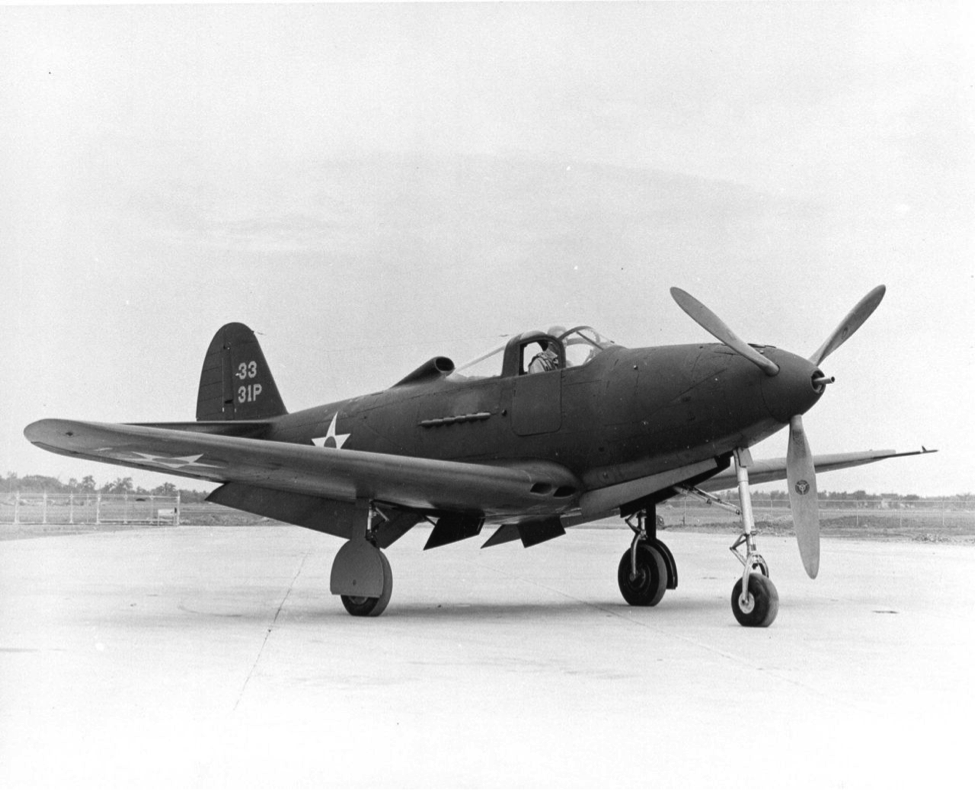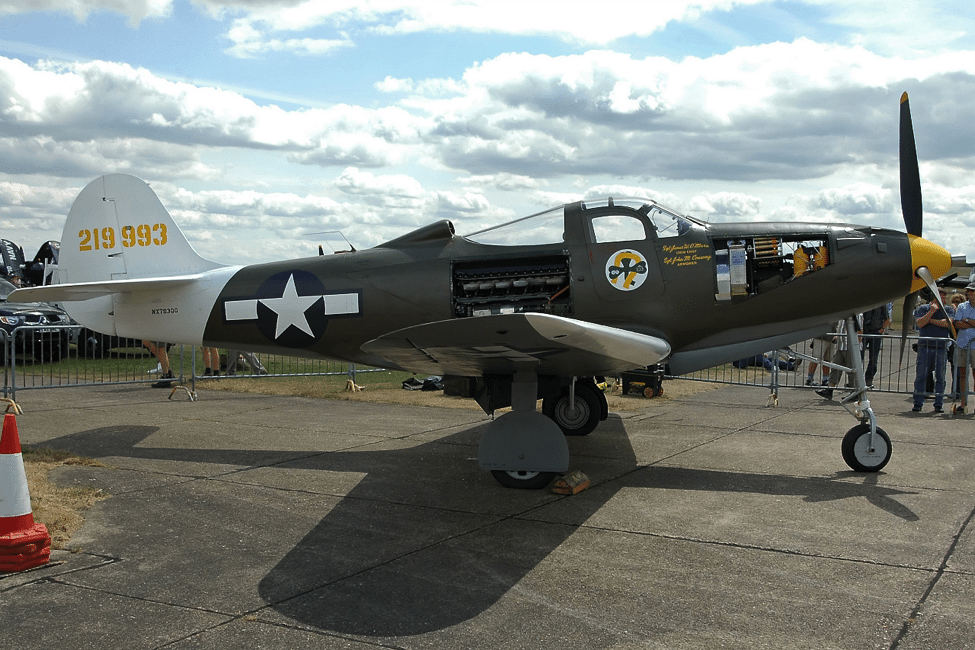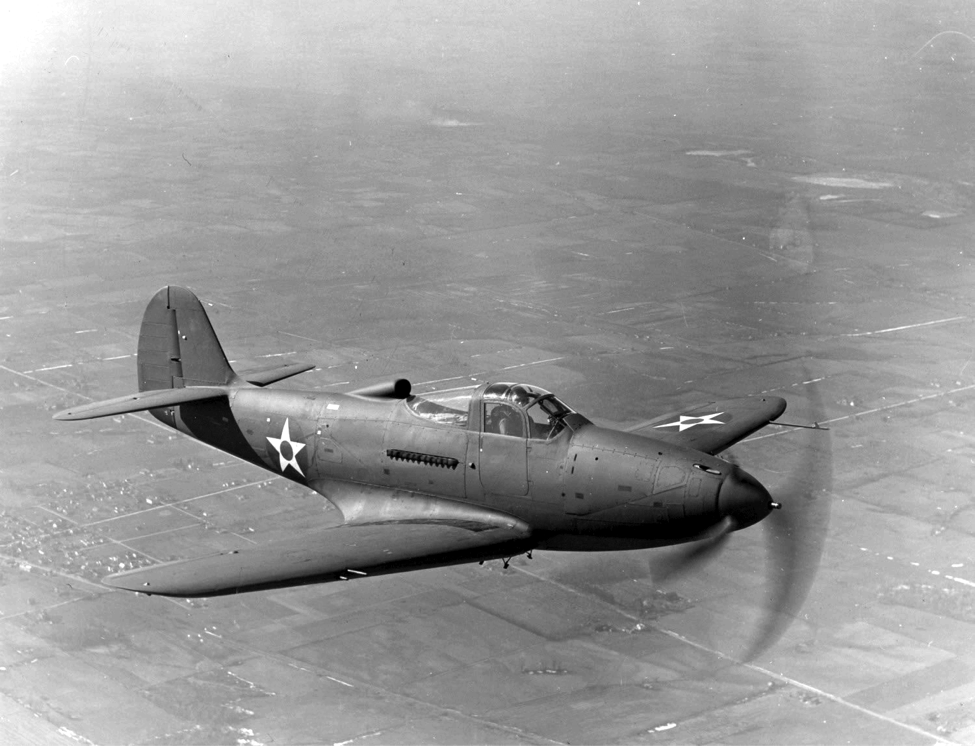The Russians Sure Got the Most They Could Get Out of Them
On 6 April 1938, the prototype Bell P-39 Airacobra lifted off from Wright Field in Ohio for the first time. The P-39 may well be the most under-appreciated American fighter aircraft ever built. This is in large part due to the fact that, as World War II unfolded, other, more advanced and suitable (read better) fighters made their way to American pilots tasked with defeating Axis machines in the air.
That was not the case for allies like Russia, which received thousands of P-39s through the Lend/Lease program and used them to rack up an impressive number of victories over their German opponents. As a ground attack platform and a low-level fighter, the P-39 had few equals.

Back-to-Front and Two Doors
The unusual design of the P-39 placed the liquid-cooled, twelve-cylinder, inline Allison V-1710 engine in the mid-fuselage, behind the pilot, driving the three-bladed propeller via a ten-foot-long drive shaft. As a result, “car” doors with roll-down windows were used to access the cockpit from either side of the aircraft rather than the sliding canopy found on so many of the P-39’s contemporaries.
One of the primary performance handicaps of the P-39 was the lack of a turbo-supercharger, which was a liability when operating above 12,000 feet. A prototype mounted a turbo-supercharger, but the associated large intake and exhaust with ducting induced drag and weight penalties on the Airacobra.
The production aircraft would be equipped instead with a single-speed, single-stage supercharger after Bell elected to retain the aerodynamic efficiency of the design. It was said that the Bell designers regretted the decision to equip the aircraft with only the supercharger. The Airacobra was also one of the first American fighter aircraft to mount tricycle landing gear.

Designed Around a Cannon
One reason the P-39 mounted the engine in mid-fuselage was to utilize space in the nose of the fighter for its primary weapon, that 200-pound 90 inch 90-inch-long Oldsmobile T9 37 millimeter cannon, which fired through the center of the propeller hub. This allowed for the best possible stability and accuracy when firing the cannon.
But like all repeating guns mounted in aircraft, the T9 cannon was limited by minimal space for its meager 30 rounds of ammunition and was prone to jamming when fired as the aircraft maneuvered. Bell designers actually designed the P-39 around the cannon, which was a departure from previous design practice.
Two .50 caliber machine guns were mounted in the nose and synchronized to fire through the propeller blades. Wing-mounted .30 and .50 caliber machine guns, as well as the ability to carry bombs and drop tanks, were also incorporated into the design as it evolved. More about P-39 armament in this video uploaded to YouTube by PeriscopeFilm.
Not Getting to Play
The Airacobra was actually designated P-45 during trials. On 10 August 1939, an order for 80 aircraft was placed with Bell, but the designation was changed to P-39 before the first deliveries.
Experience in European air combat conditions revealed that self-sealing fuel tanks and protective armor (which the original P-39s lacked) were requirements, and the P-39 would have to have them. Therefore, the first score of P-39C aircraft was deemed unsuitable for combat.
The first P-39s to enter service with the United States Army Air Corps (USAAC) were the 60 P-39Ds, equipped with protective armor and self-sealing fuel tanks, which were assigned to the 39th Pursuit Squadron, also known as the Flying Cobras, part of the 31st Pursuit Group at Selfridge Field in Michigan.

Far Better Down Low
When the USAAC fighter units arrived in the European Theater of Operations (ETO) they were equipped with Supermarine Spitfire Mark Vs instead of P-39s. The reason was simple and predictable enough.
The P-39’s performance at altitude was simply inferior to the contemporary European fighters. But the P-39 was maneuverable enough, actually capable of out-rolling the Mitsubishi A6M2 Zero, the Grumman F4F Wildcat and F6F Hellcat, and the Lockheed P-38 Lightning at up to 265 miles per hour.
Nothing, however, could be done to improve the high altitude performance of the P-39. There just wasn’t any room in the fuselage to incorporate the turbo-supercharger required to make the Airacobra a better high-altitude performer without severe drag penalties.


My wife’s grand father was instrumental in the design of the P39.
My grandfather was trained in the p-39. He was sent to England with the 9th Air Force where they received p-51B’s. Their main job was ground attacking around France. He told me that with the Cannon/ machine gun mix and the low altitude that he liked the P-39 better. Above 10,000 ft he was all Mustang!